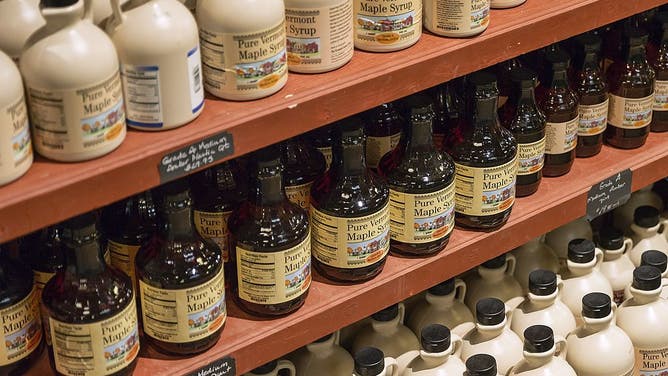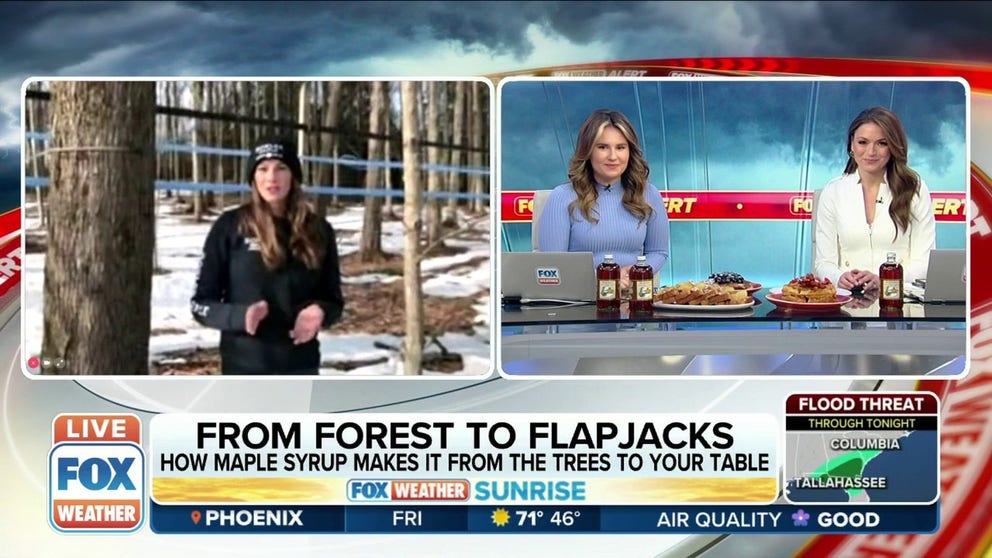Despite El Nino influence maple syrup production jumps
The U.S. Department of Agriculture reports Vermont, New York and Maine are the top-producing states. As New England winters get warmer, producers are inventing new ways to boost production.
How maple syrup makes it from the trees to your table
It’s Maple Sugar seasoning across the country. March is an ideal time to collect sap from trees for syrup. Maple syrup lovers, here’s how farmers create this liquid gold and the best grade for your taste buds.
MONTPELIER, VT - Maple syrup, a product cherished for its versatile uses in breakfast, baking and desserts, is experiencing a resurgence in production, according to data from the U.S. Department of Agriculture.
The Vermont staple experienced a double-digit increase in production nationwide in 2024, with weather likely playing a significant role.
According to USDA data, Maine saw a nearly 50% increase in production, while the Green Mountain State experienced a 19% jump.
Overall production reached 5.8 million gallons, sourced from approximately 17 million taps across 13 states.
HOW WEATHER IMPACTS MAPLE SYRUP PRODUCTION
Maple syrup is produced by tapping trees to extract sap, which is then boiled to remove excess water, leaving behind the concentrated sugary liquid.
Experts say the process is highly dependent on temperatures, with extremes impacting the flow of the liquid out of the trees.
"The sap flow is based on the weather and having good fluctuations of temperatures above and below freezing," Mark Isselhardt, a maple specialist based out of the University of Vermont, previously told FOX Weather. "So, pretty much any time after the leaves fall, and it gets exposed to that fluctuation in temperature above and below freezing, you have the potential for some sap flow."
Vermont, which produces over half of the country’s syrup, experienced its warmest winter and spring ever, with the combined six-month average at 7.3 °F above what is typical.
Along with the warm weather came plenty of precipitation, a sign that a strong El Niño was in control of the weather.
The climate pattern also impacted weather across Canada, which experienced its warmest winter on record.
The Federation of Quebec Maple Syrup Producers reported the world’s capital for the sugary confection produced a record-breaking 239 million pounds, which was 89 million pounds more than what is typical.
Other agricultural products, such as oranges, peppers and cucumbers, have not been as fortunate. Significant decreases in production have been reported in some growing regions across the Americas.
WHAT SEASON DO FRUITS AND VEGETABLES GROW IN?
Climate change impacting industry
Winter seasons, which are growing warmer and producing less snowfall, are creating challenges for the maple industry.
According to Isselhardt, producers are now implementing new strategies to adapt to the climate that range from enhanced sap extraction technologies to better forest management practices.
Collecting sap with pumps is considered to be more effective during temperature fluctuations but can be more costly.
Experts say maintaining mixed forests with red maple alongside sugar maple trees can enhance resilience against climate stressors and invasive species.
More extensive operations have reported tapping trees as early as December or January, during what used to be considered the off-season.

WESTON, VERMONT, UNITED STATES - 2013/10/10: Jugs of maple syrup in the Vermont country store.
(Photo by John Greim/LightRocket via Getty Images / Getty Images)
